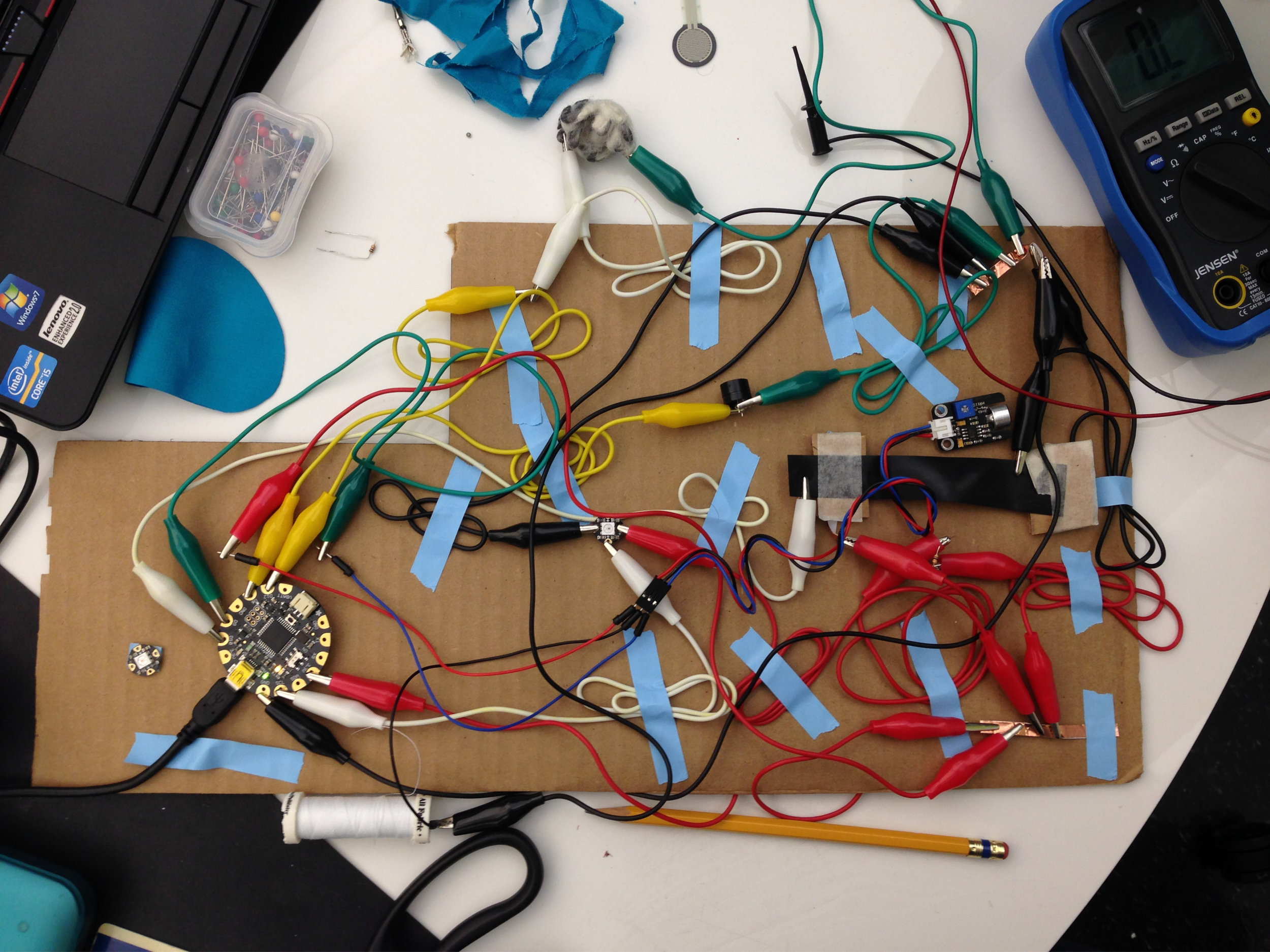WITH: Alison McKenna
RESPONSIBILITIES: Prior research, problem development, persona development, storyboarding, ideation, prototyping
BACKGROUND
When people hear “wearable tech”, they mostly think of FitBits and smartwatches, which are made with hard circuitry. Soft circuitry, on the other hand, is well-suited for other wearable tech such as responsive clothing or shoes.
However, the technology is limited, as it isn’t as developed as hard circuitry just yet; it’s less durable and less powerful, and therefore not widely used outside of crafting or research projects.
INSPIRATION
Although soft circuitry isn’t up to the task of a heavy workload, we thought it would be fun to explore it as a learning opportunity, including making our own sensors by hand.
We took inspiration from the myriad of crafting tutorials available online from sites such as Sparkfun, Adafruit, and Kobakant.
HANDS-ON RESEARCH
We explored what kinds of sensors would be reasonable to make by hand, which would then drive the interactions we could incorporate. We tested different materials, including copper tape, Velostat (a conductive polymer sheet), stainless steel yarn, and memory wire (which can be deformed when cold, but returns to its remembered shape when heated).
Key Findings:
Copper tape and Velostat could be combined to make a soft potentiometer
Stainless steel yarn could be mixed with regular yarn to make a pressure sensor
Complicated sensors like piezos weren’t worth making by hand
BRAINSTORM
Armed with an arsenal of potential inputs and outputs, we started to brainstorm with a sticky note session. Since we had a more light-hearted approach to this project, we wanted to create something with a more playful nature.
A toy of some sort seemed like a natural choice. In order to invite interaction and add personality to the project, we settled on an interactive pet.
PRIMARY USER PERSONA
We came up with a Persona to help us guide the design criteria of the project. Meet Jenny!
DESIGN CRITERIA
Based on the Persona, we came up with the design criteria for the project.
Portable - The pet would need to be easy to take along wherever the user goes
Non-intrusive - The pet should be a companion, not a hindrance to everyday activities
Personality - To make the pet feel more like a living creature
IDEATION
We started sketching different kinds of animals that worked well with the interactions we explored previously.
REFINEMENT
We narrowed down the concepts to a jellyfish for a few reasons.
Its shape was less bulky than the other concepts and would be less prone to getting in the user’s way while worn
It could be made to look more subtle than the other concepts for certain social settings
We also decided to keep the feedback limited to soft sounds and diffused lights to make Jeli seem alive, but not too boisterous.
SCENARIO STORYBOARD
PROTOTYPING: DESKTOP MODEL
The desktop model let us troubleshoot the code before getting to sewing the hardware. One major discovery we had was that using the memory wire was unrealistic. Previously we had been testing it with a direct connection to a 120V current, but quickly found out the 5V battery pack didn’t provide nearly enough power to heat the wire. Rather than replace it with a servo motor and string, which would add a lot of bulk to the design, we decided not to have the tentacles curl up.
PROTOTYPING: FULL BUILD
Jeli was made with three separate layers of electronics, plus a cover. It included a microphone, handmade soft potentiometer, and handmade squeeze sensor to feed into lights and sounds.











